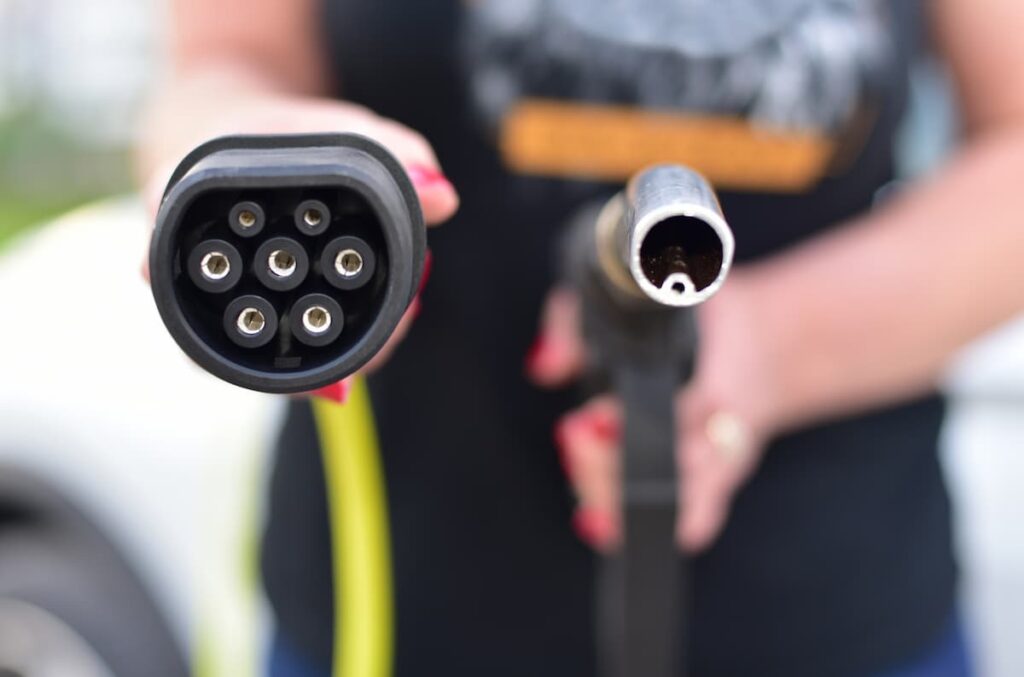With low adoption rates, the Kingdom ramps up infrastructure and manufacturing to meet 2030 targets.
Slow Start, Fast Growth
Electric vehicles currently make up just over 1% of new car sales in Saudi Arabia, far below the global average of 18% recorded in 2023. But that figure may soon change as the Kingdom intensifies efforts to become a hub for electric mobility. At the center of this transformation is EVIQ, a joint venture between the Public Investment Fund (PIF) and the Saudi Electricity Company, launched in late 2023.
EVIQ’s mission is to develop a nationwide network of fast chargers, expanding from the 285 existing public charging points—mostly slow chargers—to 5,000 fast chargers across 1,000 locations by 2030. The company inaugurated its first fast charging station in Riyadh in January 2024 and recently launched its first highway station in April.
“Very few people are willing to buy an electric vehicle without having the comfort of seeing infrastructure being available,” EVIQ CEO Mohammad Gazzaz told CNN. “We’re paving the way.”
Challenges in a Petrostate Landscape
Saudi Arabia’s ambitious push into the EV space comes with several structural challenges. High vehicle costs are a major barrier—more than 60% of EV models available in 2024 exceeded $65,000, while 73% of traditional vehicles were priced lower. Heavily subsidized fuel prices, with gasoline around 60 cents per liter, further reduce the financial appeal of electric alternatives.
In addition, extreme summer heat in the Kingdom can impair battery efficiency and charging speeds. Long travel distances between cities such as Riyadh and Jeddah—spanning over 950 kilometers—further exacerbate range anxiety among prospective EV buyers.
Despite these issues, PwC Middle East’s eMobility Outlook suggests that more than 40% of Saudi consumers are considering purchasing an EV within the next three years. But to reach mainstream acceptance, experts say more financial incentives and robust public charging infrastructure are critical.
Building a Local EV Ecosystem
Beyond infrastructure, Saudi Arabia is betting on domestic EV production to reduce dependency on oil revenue, which comprised 60% of government income in 2024. PIF is playing a pivotal role by investing in global and local players alike.
Lucid Motors, backed by PIF, opened its first Saudi manufacturing facility in 2023. CEER, a joint venture between PIF and Taiwanese tech firm Foxconn, aims to roll out its first locally manufactured EV by 2026. Meanwhile, a separate partnership with Hyundai has already begun construction of another auto plant.
EV brands are taking note. Tesla entered the Saudi market in April 2025, while Chinese automaker BYD opened its first showroom in May. BYD’s Atto 3 model, priced at around $27,000, is expected to make EVs more accessible and drive competition.
“Heavy investment in local production aligns with broader goals to decarbonize and diversify the economy,” said Heiko Seitz, PwC’s Global eMobility Leader. “Saudi Arabia is not just adopting EVs—it’s building an entire industrial ecosystem around them.”
From Riyadh to the Kingdom
EVIQ’s infrastructure rollout now includes cities like Jeddah, and expansion is underway in Mecca and Medina. Gazzaz says the goal for 2026 is to establish a “minimum viable network” that meets 70 to 80% of travel needs across the country, even in tier-two cities and on main highways.
Still, experts believe that achieving the target of 30% EV penetration in Riyadh by 2030 may require stronger consumer incentives. A 2024 study by the King Abdullah Petroleum Studies and Research Center and University College London recommends measures such as VAT exemptions, subsidized charging, and free home charger installations.
Government officials say some subsidies are already in place, but further clarity and accessibility will be crucial.
“EV prices are falling, model options are growing, and government signals are clear—yet range anxiety remains,” Seitz noted. “Public charging is the main gap, and it’s now a top priority to fix.”



